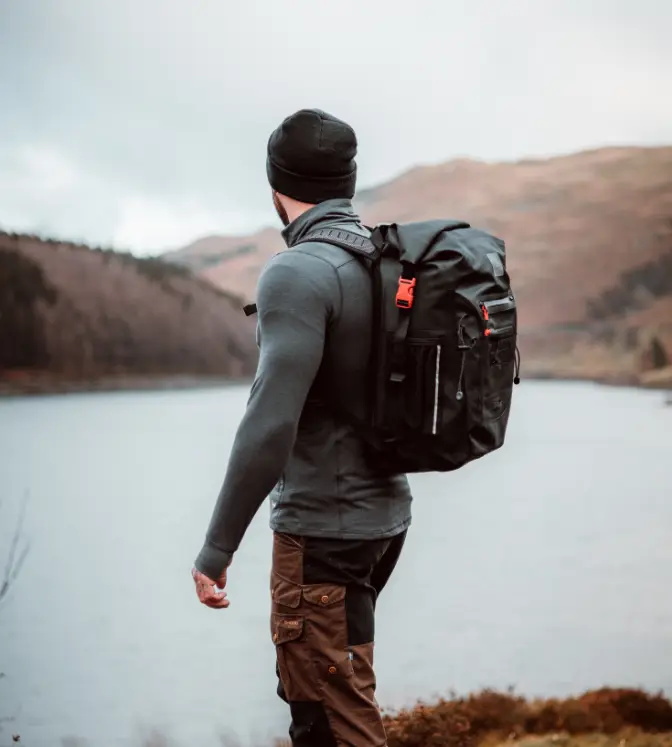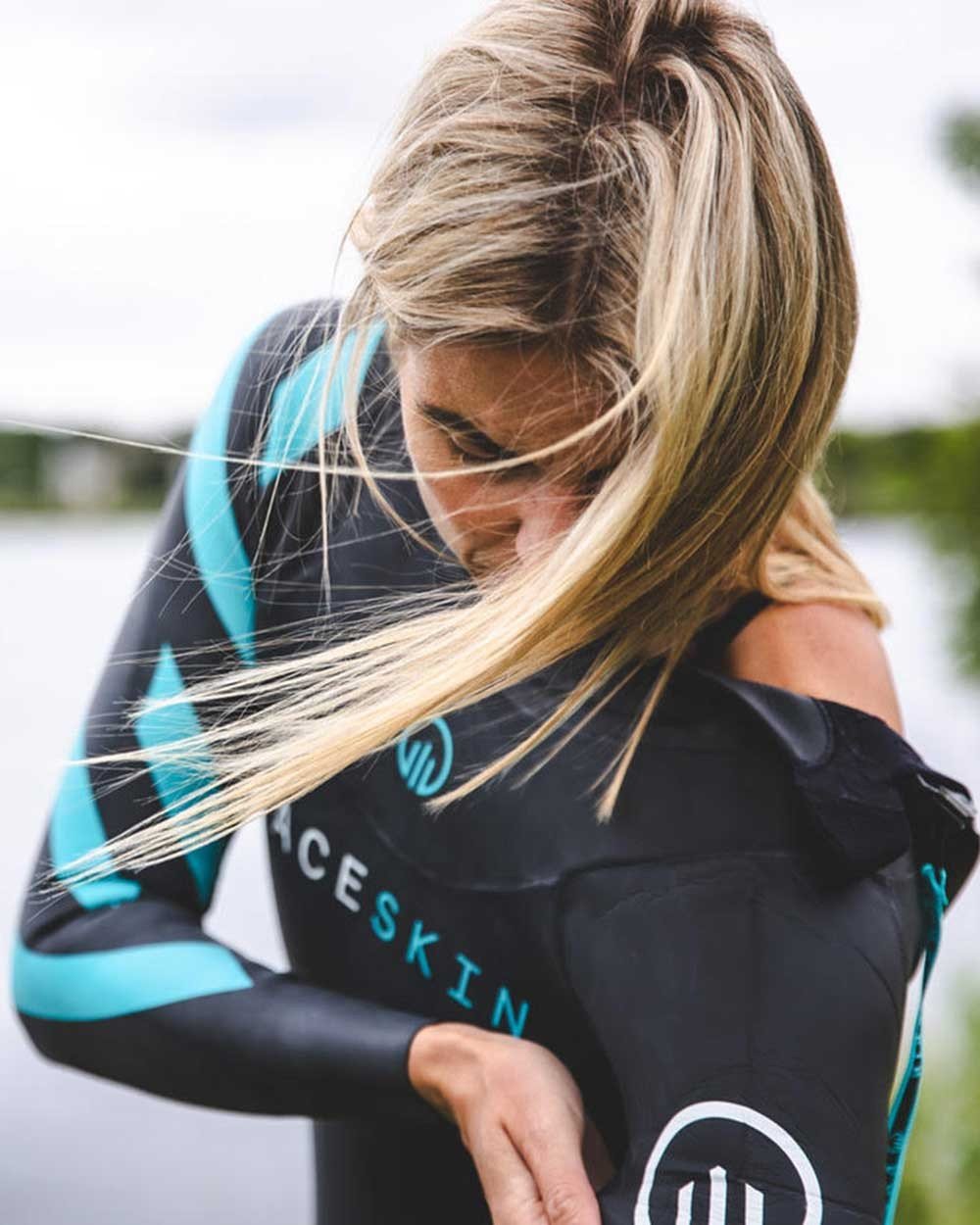Is Open Water Swimming Safe?
Swimming outdoors can take you to a number of beautiful locations and although going for a swim in cold, open water can be exhilarating, it’s not without risk, so it is important to enjoy the activity safely. Understanding the basic principles of open water safety can not only massively increase the enjoyment of open water swimming, it can also significantly reduce the number of incidents that occur every year.
That’s why we’ve put together a list of tips and considerations for open water swimmers, including the right equipment and gear to help keep you safe.
What exactly are the dangers of swimming in open water?
First of all you will need to be able to swim a reasonable distance without putting your feet down. When swimming outdoors, it is likely you’ll be out of your depth for some, if not most of the time.
Swimming in open water therefore increases the risk of becoming fatigued. At the end of the day, there are no walls to push off from or cling on to when you get tired and there most probably won’t be a ‘shallow end’.
Additional hazards can come in the form of other traffic in the water, strong currents and streams, floating objects or debris and sometimes even marine animals.
Water temperature may also be very different from a swimming pool. Open water is generally colder, which can cause hypothermia, cold water shock, or after-drop.
Open water bodies may pose a risk of infection. Although we believe this risk is relatively small, common sense prevails. Choose where and when to swim, avoid ‘taking in’ or swallowing water and cover any small open wounds with waterproof plasters.
So, what do I need to do to stay safe?
First of all, consider swimming with a buddy or joining an open water swimming group or club. Whilst many experienced open water swimmers are happy to swim alone, if you are new to open water swimming we would definitely recommend buddying up. Not only is it much safer to swim in numbers, it is a great way to make new friends as well…. If you insist on going it alone, make sure you tell someone where you are going and how long you are going to be.
Give some thought to weather and water temperature. For beginners, it is best to start in the warmer months. It is much safer to swim in waters that are of a slightly higher temperature, especially here in the UK where open waters are notoriously freezing. Also check the weather forecast, and if in doubt, don’t go out!
Choose your spot. The number of open water venues and clubs have grown significantly over the past few years. The advantage of swimming at a ‘designated’ venue or club is the knowledge that there will always be other people around in the form of other swimmers and/or staff. Many open water venues now offer high standards of safety, with lifeguards on duty and regular water safety checks. An added bonus is of course that swimming at a venue or with a club, brings with it an amazing sense of community. If you are going it alone however, do your homework! Check where you can safely enter and exit the water, check whether there are any potential hazards you need to be aware of, and if you plan to go swimming in tidal waters, check what the tides are doing before you enter the water. Luckily there are now some great books on the market with fabulous swimming spots around the country, all of which have been tried and tested by swimmers who can be found immersed there regularly. Check out The Art Of Wild Swimming England & Wales or The Art of Wild Swimming Scotland for some great recommendations and beautiful spots.
Acclimatize. If you plan to go swimming when the water is still anything other than ‘comfortable’ (and in the UK, this is unfortunately most of the time), allow some time for your body to get used to the cold. However tempting it might be ‘to get it over and done with’, do not jump or dive straight in. Enter the water slowly and try not to hold your breath. Once you are in the water, keep in mind that cold water immersion will definitely affect your swimming ability. Swimming in cold open water is very different to swimming in a temperature regulated swimming pool, so know your limits, and build up the time you spend in the water slowly.
Familiarize yourself with the ‘Float to Live’ principle. When you are finding yourself in a spot of trouble, whether through cold water shock, fatigue or you’re simply feeling overwhelmed, try not to panic and fight the urge to swim. Instead, roll onto your back, hold on to your tow float, control your breathing and signal for help.
The right gear is a good idea!
Wear a wetsuit. If the water is cold, consider wearing a wetsuit, especially if you are one of those people who really feels the cold! Not only do Wetsuits keep you warm when open water swimming, after all the UK is not known for balmy water temperatures, they also provide some buoyancy.
Take a Tow Float. If you are new to open water swimming or you plan on swimming in an unsupervised location it is sensible to have a Tow Float or a Dry Bag to keep you safe and seen. In many open water venues, a tow float is now actually compulsory.
A Tow Float is basically a ‘floatation device’ that makes you more visible to boats, lifeguards and other water users. They are brightly coloured, attach to your waist with a waist belt and short leash, very lightweight to keep drag to a minimum and they are ‘pulled’ behind while swimming, out of range of arms and kick zone.
A Dry Bag offers the same great ‘safety features’, but with the added advantage of keeping your kit safe and dry while swimming. They also easily support an adult’s weight so are perfect for those moments when you need a rest, which considering there is no side to hold on to when you need a five minute breather and add that to waves, currents and windy days, you are likely to fatigue a lot sooner in open water than you would in a pool.

Wear a brightly coloured swimming cap. Another essential part of your ‘be safe, be seen’ swimming kit, a Swimming Cap is vital when swimming outdoors. Wearing a brightly coloured swimming cap not only keeps your head warm and covered, but more importantly, it will make sure you are easily visible in the water. In fact, a lot of open water swimming venues now insist on a brightly coloured hat being worn whilst swimming.

Always carry a means of calling for help. A Safety Whistle is a great way to signal for help if you need it, whether it be to shore, another swimmer or even other traffic in the water. It is also a good idea to carry a mobile phone in a Waterproof Phone Case, allowing you to make emergency calls whilst your phone is safely sealed.
Warming up post-swim……
Even when you are ‘safely’ out of the water, you are not entirely ‘out of the woods’ yet. Most of you will have heard of after-drop. After-drop is very real and unfortunately not uncommon amongst open water swimmers, especially amongst those who continue to swim in the colder months. It refers to a drop in core temperature after you have exited the water. You may get out and feel absolutely fine, then you start shivering, feeling faint and generally feeling unwell…..
Invest in a Changing Robe. When you get out of the water, staying warm and avoiding after-drop is crucial to swim safety, and a Changing Robe is a great piece of equipment to help you do this. Changing Robes are something warm and cosy to climb into when getting out of cold water, they protect you against the elements, and their oversized nature gives you enough room to allow you to shed your wet clothes quickly, without losing too much body heat.
Take a Hot Water Bottle or even better, a Snug Bud. The Snug Bud is every open water swimmer’s dream as it basically kills two birds with one stone. You can wrap your base layers around it whilst you swim, return to the comfort of a warm clothes, then whip it on to gradually warm up your core.
Layer up. Wear lots of warm baggy layers to trap warm air and pop on a Bobble Hat or Beanie and some Gloves.

And finally, treat yourself to a nice hot drink and a lovely piece of cake. The benefits of these are mostly psychological but they still help.

There are so many reasons to love open water swimming. Complete freedom, no sharing a lane, being out in the fresh air, being one with nature, a great sense of community…. But the awesomeness of being out in the open water, whether it’s lakes, lochs, rivers, reservoirs, streams or sea, needs to be balanced with safety.
So keep swimming, but be safe and be seen…..





